This spring, I've been watching the slow awakening of deciduous trees, you know, the trees that lose their leaves in the fall and grow them back in the spring. But there are some trees that stay green all year round: conifers. Back in my second post, I mentioned that all I know about conifers I learned from They Might Be Giants. I knew that conifers didn't lose their needles in the fall, but I hadn't really thought about what happens to them in the spring. Until last week, when I walked by some bushes and noticed that they had developed bright little light green tips.
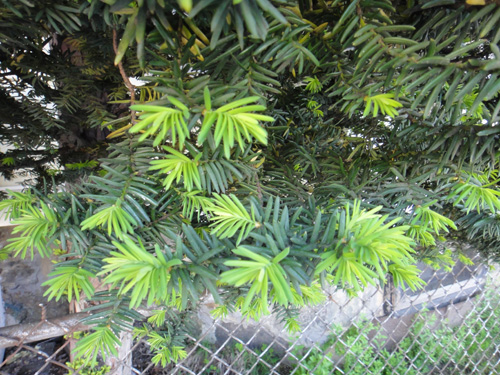
How cute is that?! It's like highlights! This must be new growth. You can even spot some little brown bud-like bits at the base of the new growth. I wonder how similar their development is to the deciduous trees I've been following?
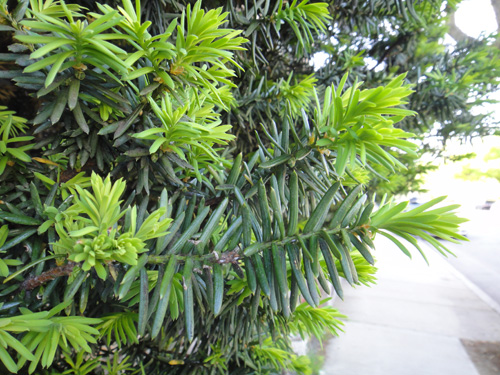

How cute is that?! It's like highlights! This must be new growth. You can even spot some little brown bud-like bits at the base of the new growth. I wonder how similar their development is to the deciduous trees I've been following?

Elsewhere in trees-that-do-not-behave-like-the-ones-I've-been-watching are the weirdest trees on my street: the honey locusts. At least I think they are honey locusts. They have been the slowest trees to start blooming around here and are just starting to get their leaves now. At the end of April, when my tree was full of pollen-covered flowers and the Norway maples were bringing bright green to the whole neighborhood, they looked like this...
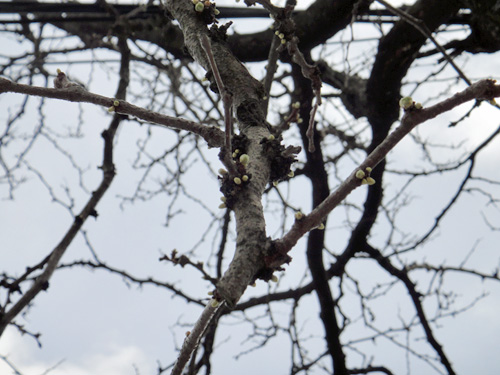
The honey locusts have these uneven zigzag branches that make them look super creepy. They remind me of the spooky forest that Dora the Explorer constantly has to tiptoe through to get to the other side. In the winter, they looked almost pitch black.
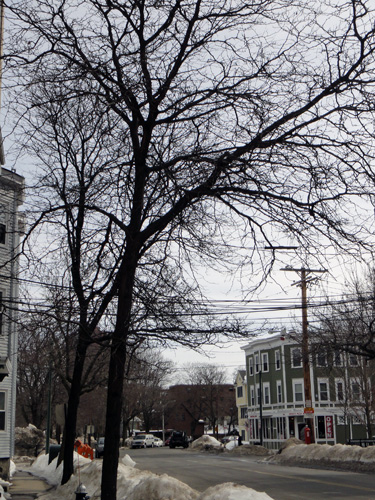
Honey locusts are actually even creepier than this. Regular honey locust trees have thorns. And not like little rose thorns. These are big, menacing thorns that look like something from the age of the dinosaurs (which they very well may be!).
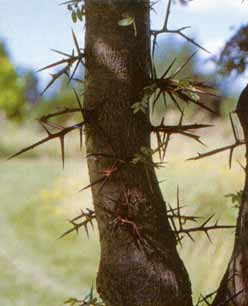
The variety that is planted for shade in the city is thornless, however. Earlier this month, I spotted a honey locust a few blocks away that had started developing its leaves a little earlier than the ones on my street and noticed that it too had thorns. Only on the branches though, thank goodness!
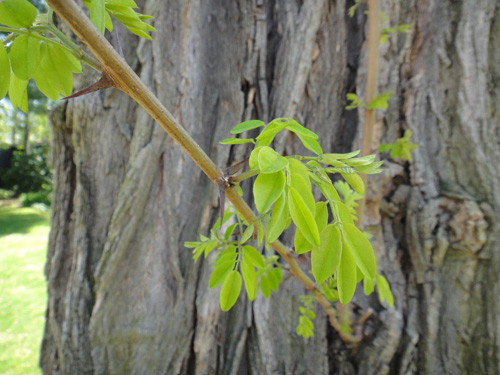
Even if they aren't growing thorns out of their trunks, the honey locusts around me are growing small twigs (like the one above) and flowers and leaves directly out of the trunk. Here's one honey locust a block away from me back at the end of April.
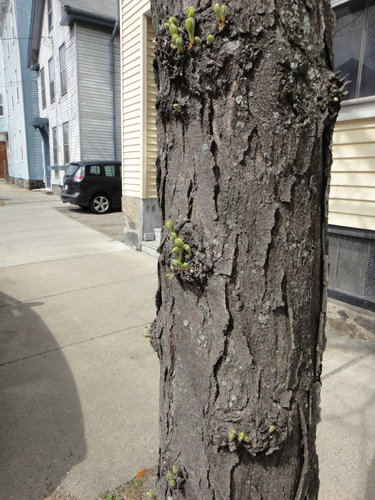
The little buds are coming straight out of the trunk! They seem to be coming out at spots where there are these knots. I wonder if they have created the knots by repeatedly sprouting here or if they are growing here because the bark is somehow different here. And it's not just this tree. All the honey locusts have these buds growing on the trunk. Even the youngest one.
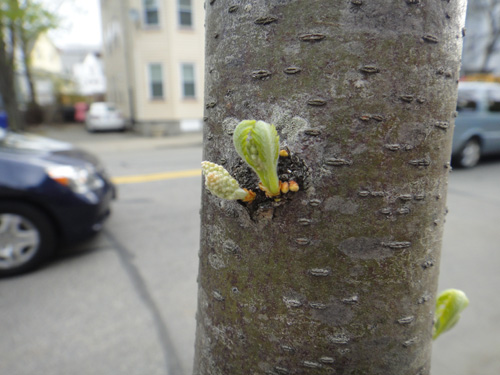
Three weeks later, the little buds have developed into leaves and flowers.
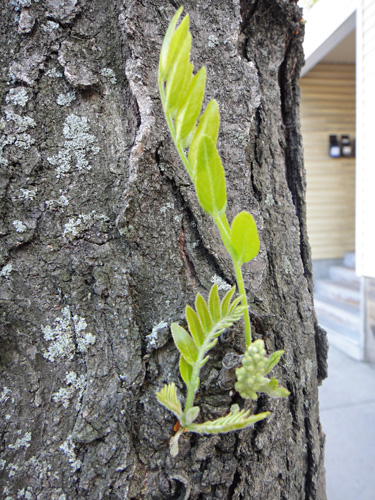
These are the same leaves and flowers that are growing up in the branches. I just can't get over the fact that they are growing down here as well. There's something about this kind of tree, it seems, that just wants to grow wacky stuff out of everywhere.
The honey locust has long compound leaves with what looks like 15 or so leaflets and I know from my kids tree id book that it makes the crazy long seedpods (up to 18" long!) that we see all over the sidewalks around here in the fall.
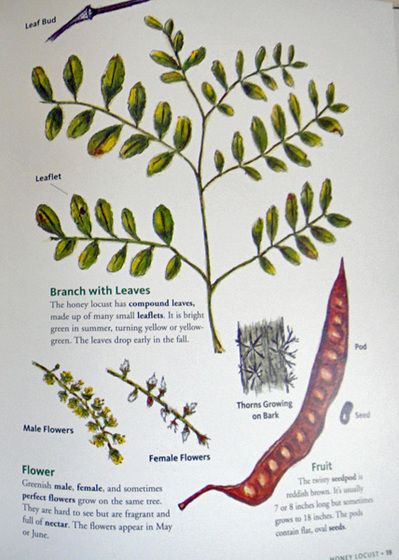
It's a weird tree. For more about the honey locust, check out this post from BiologyDude.

The honey locusts have these uneven zigzag branches that make them look super creepy. They remind me of the spooky forest that Dora the Explorer constantly has to tiptoe through to get to the other side. In the winter, they looked almost pitch black.

Honey locusts are actually even creepier than this. Regular honey locust trees have thorns. And not like little rose thorns. These are big, menacing thorns that look like something from the age of the dinosaurs (which they very well may be!).

The variety that is planted for shade in the city is thornless, however. Earlier this month, I spotted a honey locust a few blocks away that had started developing its leaves a little earlier than the ones on my street and noticed that it too had thorns. Only on the branches though, thank goodness!

Even if they aren't growing thorns out of their trunks, the honey locusts around me are growing small twigs (like the one above) and flowers and leaves directly out of the trunk. Here's one honey locust a block away from me back at the end of April.

The little buds are coming straight out of the trunk! They seem to be coming out at spots where there are these knots. I wonder if they have created the knots by repeatedly sprouting here or if they are growing here because the bark is somehow different here. And it's not just this tree. All the honey locusts have these buds growing on the trunk. Even the youngest one.

Three weeks later, the little buds have developed into leaves and flowers.

These are the same leaves and flowers that are growing up in the branches. I just can't get over the fact that they are growing down here as well. There's something about this kind of tree, it seems, that just wants to grow wacky stuff out of everywhere.
The honey locust has long compound leaves with what looks like 15 or so leaflets and I know from my kids tree id book that it makes the crazy long seedpods (up to 18" long!) that we see all over the sidewalks around here in the fall.

It's a weird tree. For more about the honey locust, check out this post from BiologyDude.
